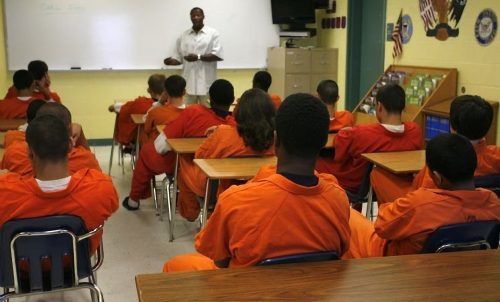
Via Wikimedia Commons

This work is licensed under a Creative Commons Attribution-ShareAlike 4.0 International License.
By Audrey Sawyer
WASHINGTON, DC – A recent report, “Youth Justice By The Numbers,” shows a sharp 77 percent decrease in youth incarceration between 2000 and 2020 (numbers of 109,000 down to 25,000), showing the “21st century has seen significant declines in youth arrests and incarceration.”
The report, produced by the Sentencing Project, noted while public opinion tends to wrongfully assume both that youth offending is routinely violent and crime is perpetually increasing, most youth offenses are low-level and nonviolent offenses.
“As The Sentencing Project marks 50 years since the era of mass incarceration began, states working to end this overly punitive era can learn important lessons from both the rise and then the sustained fall in youth arrests and placements,” the report hosts wrote.
The report explains placement varies on the state, but Alaska ranks the highest (330 out of every 100,000 youth are in placement) with New Hampshire ranking the lowest (20 out of 100,000 are held).
Youth of color are much more likely than white youth to be held in juvenile facilities, the report found, noting, in 2019, Black youth were 4.4 times as likely to be incarcerated. Tribal youth were 3.2 times as likely to be incarcerated. Latinx youth were 27 percent as likely compared to white youth to be incarcerated. Asian youth were noted to be the least likely to be held in juvenile facilities.
The report states that when white youth are convicted, they are more likely to receive probation or informal sanctions, while Black youth are more likely to be incarcerated.
Numbers show, the report argues, that the arrest rate for people under the age of 18 has declined 80 percent through 2020 (peak being 1996). Between 1997 and 2021, there was an 84 percent drop in the amount of youth held in adult jails and prisons.
Josh Rovner, Director of Youth Justice at The Sentencing Project and the report’s author, was optimistic by the declines in youth arrests and incarceration over the past 20 years, stating, “This demonstrates the possibility for similar successes for the adult population.
Rovner emphasizes there is still more work to be done despite the progress, arguing, “There are still significant hurdles to overcome, particularly the racial and ethnic disparities in the youth justice system.”
Rovner added, “We urge lawmakers to advance policies that will address the persistent racial and ethnic disparities of youth justice, and redirect resources to effective solutions rather than relying on detention.”
